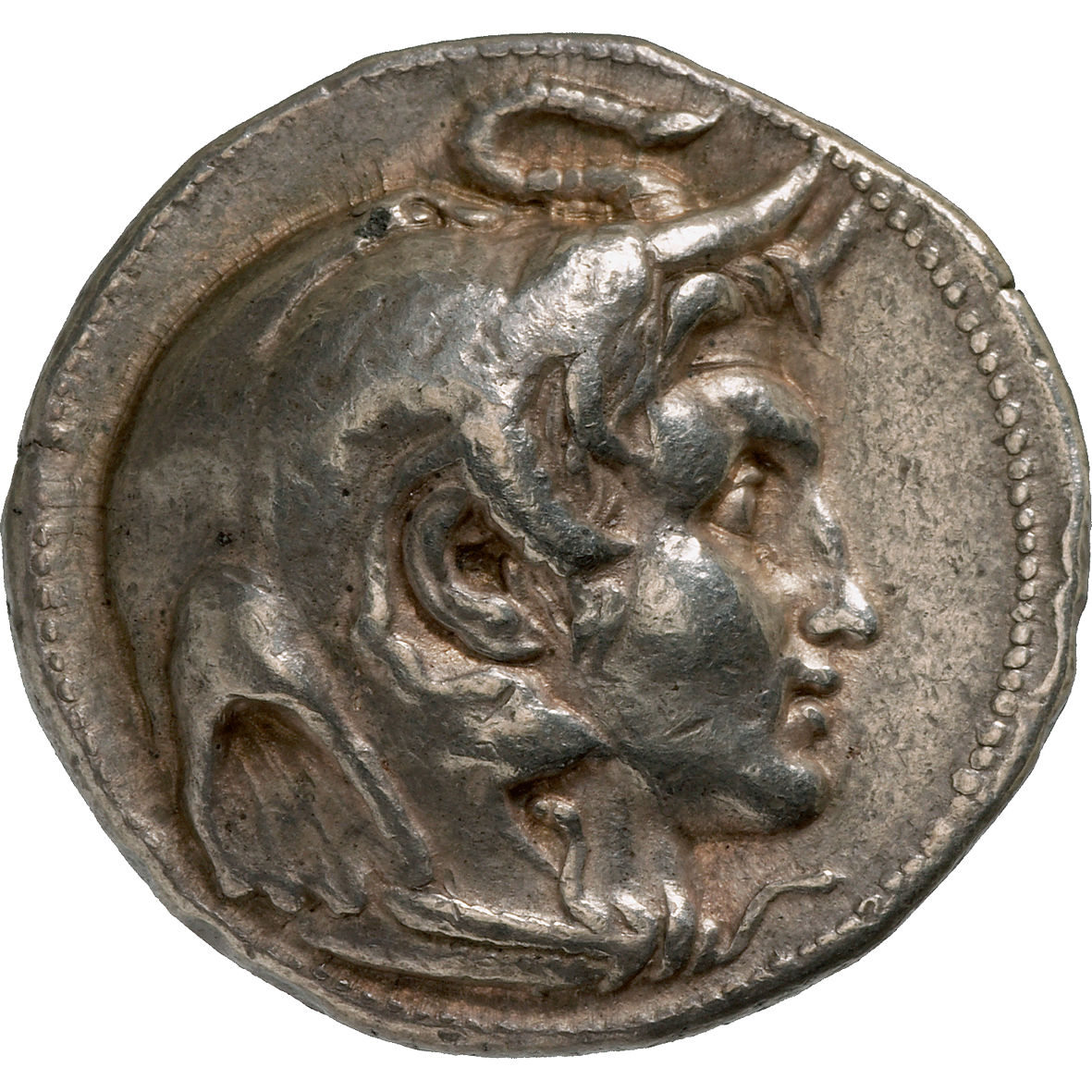Diese Tetradrachme entstand unter der Verwaltung von Ptolemaios I. (323-318) nach dem Tode Alexanders des Grossen im Jahr 323 v. Chr. Sie zeigt eines der schönsten, wirklich lebensnahen Porträts von Alexander und markiert damit einen wichtigen Wendepunkt, sowohl in der Geschichte der Münzprägung, als auch der Kunst und der Politik: Ein echtes, mit individuellen Zügen versehenes menschliches Porträt war im Westen bis dahin undenkbar gewesen. Einzig Götter, oder aber Herrscher mit den eindeutigen Attributen einer mythologischen Gestalt, z. B. Alexander in Gestalt des Gottes Herakles, waren zuvor als Münzbilder in Frage gekommen.
Hier hingegen sehen wir den lebensechten Alexander als Eroberer Indiens – das Symbol dafür ist der Elefantenskalp mit Stosszähnen und aufragendem Rüssel auf seinem Kopf. Die Rückseite zeigt den Göttervater Zeus mit seinem Adler.

